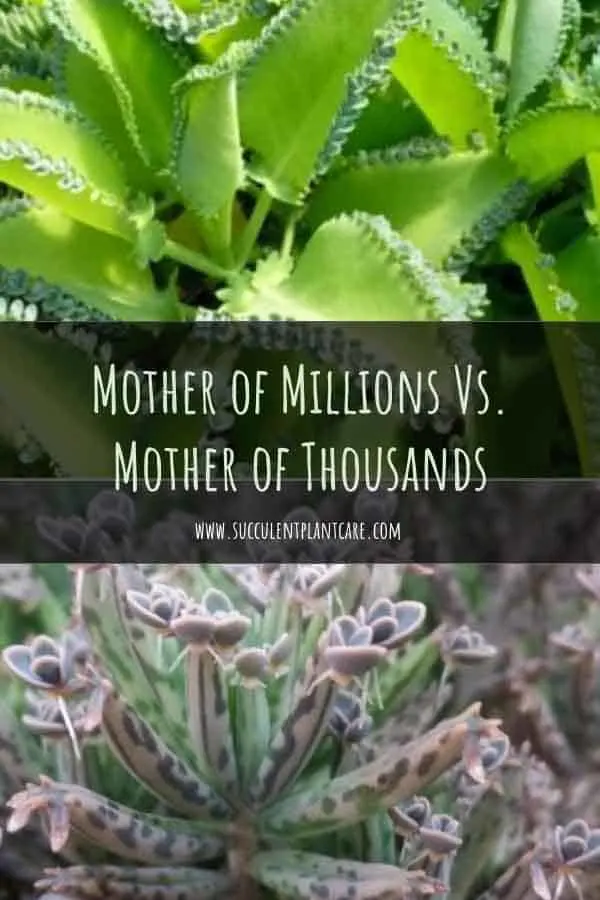What is the difference between Mother of Thousands and Mother of Millions?
These two plants, Mother of Millions and Mother of Thousands are often confused with each other because of their similarities. The difference between the two can be found in the shape of their leaves.
Mother of Thousands have wider, broader leaves that grow in pairs, and plantlets appearing along the edges of the leaves. Mother of Millions have narrow leaves with plantlets appearing at the ends or the tips of the leaves.

Kalanchoe Daigremontiana (Mother of Thousands)
Native to Madagascar, these are also called Bryophyllum Daigremontianum (commonly called Mother of Thousands, Alligator Plant, Mexican Hat Plant). Mother of Thousands are attractive and unusual looking plants with large green leaves that form baby plantlets along the edges.
These plantlets are known to grow anywhere they land and can be difficult to get rid of because they are rapid growers. These plants are considered a nuisance to some and invasive weed in some areas. These plants are hardy and can tolerate intense heat once established.
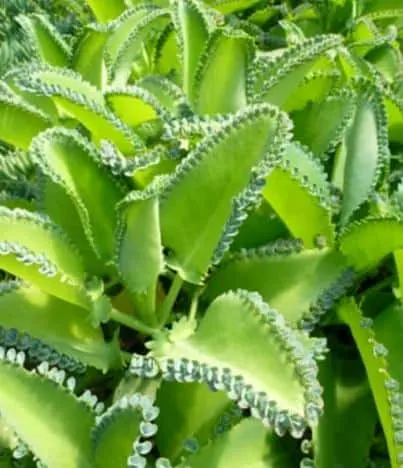
Mother of Thousands
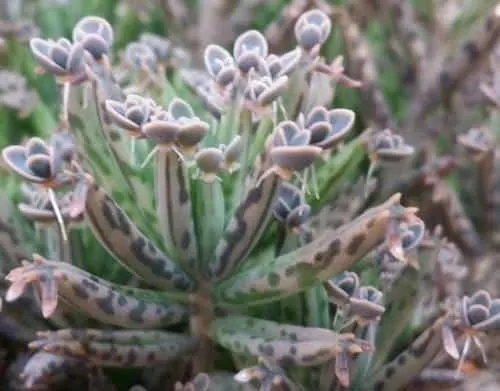
Mother of Millions
Kalanchoe Delagoensis (Mother of Millions, Devil’s Backbone, Chandelier Plant)
Also referred to as Bryophyllum Delagoensis, these are rapid growing plants that are known to multiply easily anywhere it lands, giving them their rightful name ‘Mother of Millions’. They produce little plantlets that grow from the ends of the plant. These plantlets are capable of growing relentlessly anywhere they land, and their seeds can survive for years even when the plants are pulled out.
These plants are not only drought tolerant, but highly adaptable to different environments, and are considered as weeds or invasive species in some parts of the world. The same qualities that make them a nuisance to some make them highly desirable to others. These are attractive plants with amazing qualities. They are easy to care for and multiply effortlessly.
Care
These two plants are both native to Madagascar and require the same type of treatment. Given their names, these plants are easy to grow and require minimal care. They are highly adaptable to most conditions from drought to mild frost. Watering needs are also simple. They can adapt to dry conditions as well as humid conditions.
They multiply easily and rapidly on their own, without any help. How they multiply is they form little clusters of flowers at the end or edges of the leaves. These little flowers are actually little baby plants or plantlets. When these baby plants get detached from the mother plant, they easily take root and begin growing as a new plant anywhere they land.
This may sound great if you want to multiply the plant but imagine it taking over your garden and the neighbor’s, and so forth. These plants spread by seeds and by plantlets. To get rid of them, the plantlets can be pulled out of the soil but the seeds can remain viable in the soil for many years, which is why they are considered an invasive species in some parts.
A big part of how to care for these plants is not necessarily how to help them grow and thrive, but how to contain them so they do not become invasive. I am looking forward to learning more about this plant and will update this page periodically and let you know how this plant is doing. I will do my duty and prevent this plant from being invasive by keeping it contained in a container.
Toxicity
Toxic to cats, dogs, cows (cattle), birds
According to the ASPCA and the pet poison helpline, kalanchoes are are considered toxic to pets. Kalanchoes contain cardiac toxins (bufadienolides). The level of toxicity is generally mild to moderate and rarely severe.
When ingested by dogs and cats, the most common symptoms are gastrointestinal irritation or upset. If large amounts are ingested, there is a higher risk of more severe symptoms such as changes in heart rate and rhythm. If in doubt, do not leave this plant near pets.
If you suspect poisoning, contact your local veterinarian immediately or the ASPCA Animal Poison Control Center at 888-426-4435.
Are they invasive or harmless?
I have heard about these plants to know that they are considered as invasive weeds by many. In fact, both plants, Mother of Thousands and Mother of Millions are considered invasive in a lot of areas. I heard that these plants need to be kept away from other plants because they grow rapidly and aggressively.
They can quickly take over an area and stifle the growth of other plants surrounding it. In fact, I have heard of people being so sick of this plant that they want to eradicate them completely from their garden but they are just so hard to get rid of. The plantlets that grow out of the leaves can grow anywhere they land.
These plantlets are easy to pull and remove, but their seeds can stay viable in the soil for years and new plants will keep on popping up, long after the plants themselves are removed. This is why some people have had enough of this plant. Still, some love them and don’t mind having them all over their yard.
I may regret saying this later on, but I think they are intriguing and beautiful plants.They form clusters of pretty flowers that are very attractive to look at. I wanted to see for myself how these plants grew and reproduced.
My First Mother of Millions Plant
There was this tiny pot I ‘rescued’ from Trader Joe’s. I say rescued because I don’t think it will get the care it needed and the plants will eventually suffer if they stayed there. Anyway, it cost only USD $2.50 and I thought that was a great deal considering I will be getting three plants out of this tiny pot.
What attracted me to this pot at first were these light green sedums called Sedum Lineare (Needle Stonecrop).
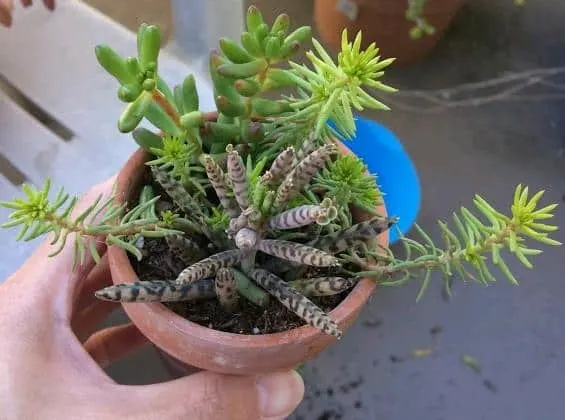
I am familiar with sedums. I know they are easy going plants and will not be a problem to grow and propagate. In fact, I am very familiar with the other sedum in this tiny pot. These are Sedum Rubrotinctum (Jelly Bean or Pork and Bean plants).
I have successfully grown and propagated these from leaves and stem cuttings. Please click on “How I Grew my Succulent Collection” to see some of my other Jelly Bean plant collection from propagation. There are fallen leaves from this plant in this pot that are already rooting and growing new plants.
I replanted these two sedums in a fairy garden planter. I placed the fallen leaves on the soil in the fairy garden planter to let them root and grow new plants on their own. Click on “Revamping an Overgrown Fairy Garden” to see where these two plants ended up.
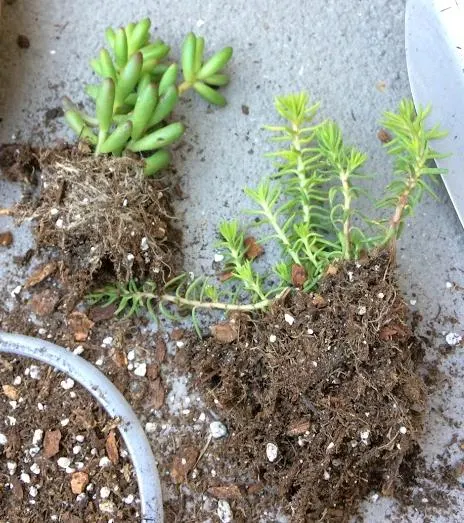
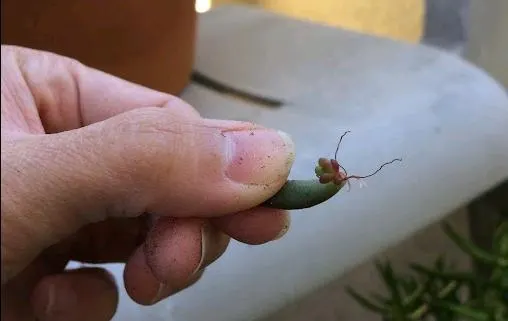
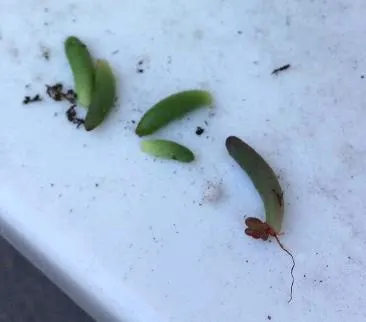
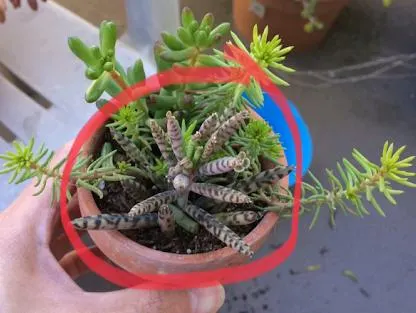
What I had left is this interesting looking plant. When I saw it I thought it was a type of Mother of Thousands plant. I found out later that it was actually a Mother of Millions plant, also known as Devil’s Backbone or Chandelier Plant (Kalanchoe Delagoensis).
I thought to myself, even better…millions as opposed to thousands! It may still be small but I heard it grows rapidly.
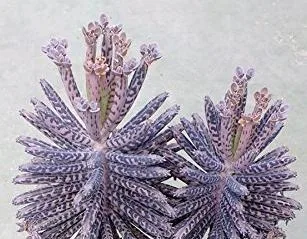
Here’s what a mature Kalanchoe Delagoensis looks like (Mother of Millions, Chandelier Plant)
This is my first experience with this plant. For now the best I can do is to keep it in its own pot and keep it away from these other two plants it came with. What I did was I pulled it out of the pot it came in, removed the other plants, and replanted it in the same pot it came in.
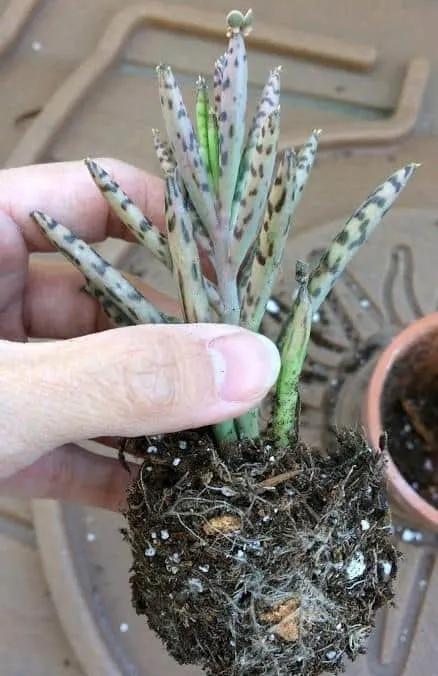
I know this plant grows fast and so I expect this plant to outgrow this pot and needing to be repotted in a bigger pot. But for now, since it is tiny, I think it will do just fine here. I used a cactus potting mix because I already had it laid out. This plant, however, will do well with a regular potting mix.
Due to the fact that it is highly adaptable, I am assuming it will not be picky with the type of soil you use.
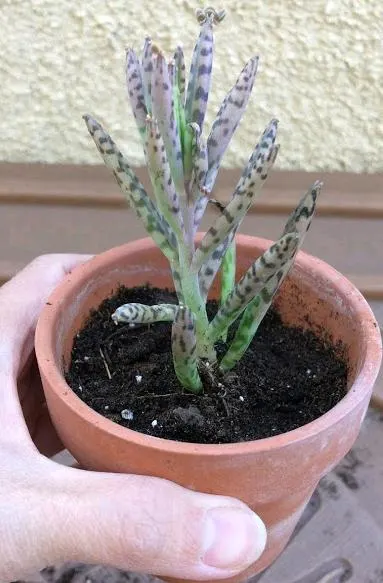
Update
Here’s how the plant looks one month after repotting into this pot. It has produced lots of new growth. I pretty much ignore this plant and give it a good watering when the soil is dry. It receives bright morning light.
So far, it’s living up to its name and has been a very easy plant.
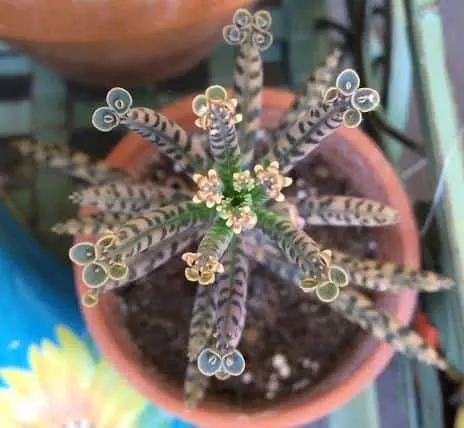
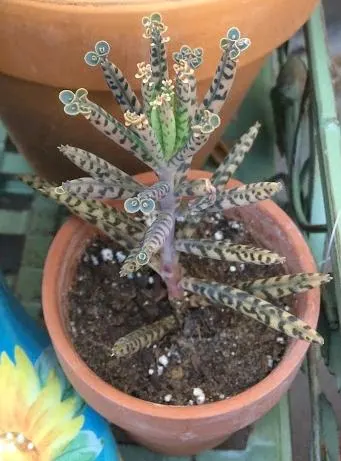
Second Update
Here’s how the plant looks five months later. I had to repot it into a bigger one. It has produced lots of new growth and if you look closely, you see roots growing out of the little plantlets.
Maybe they are getting ready to drop and form new plants of their own. If that happens, I’ll have plenty of these baby plants growing everywhere. And yes, it has continued to live up to its name.
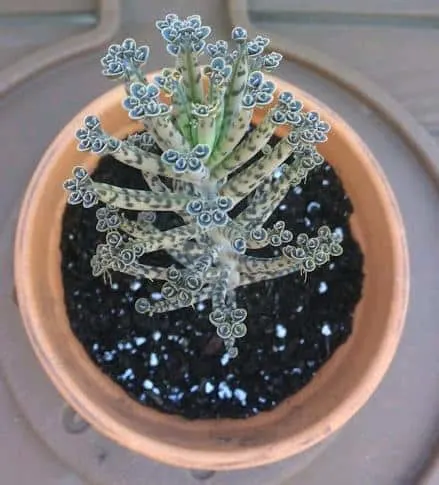
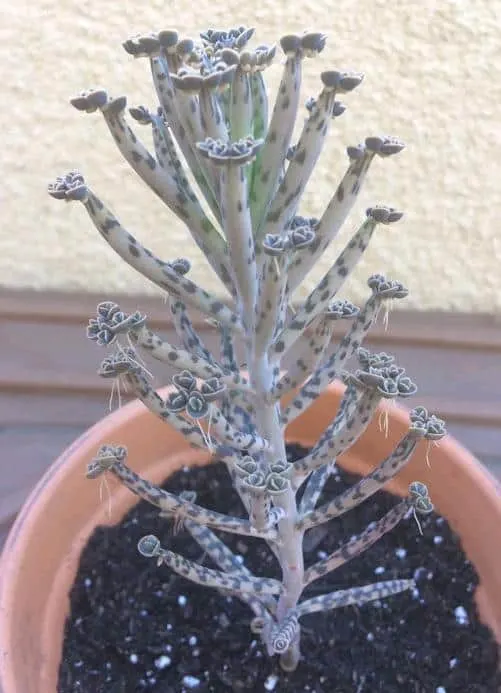
Pin this post to save for yourself or share with your friends!
